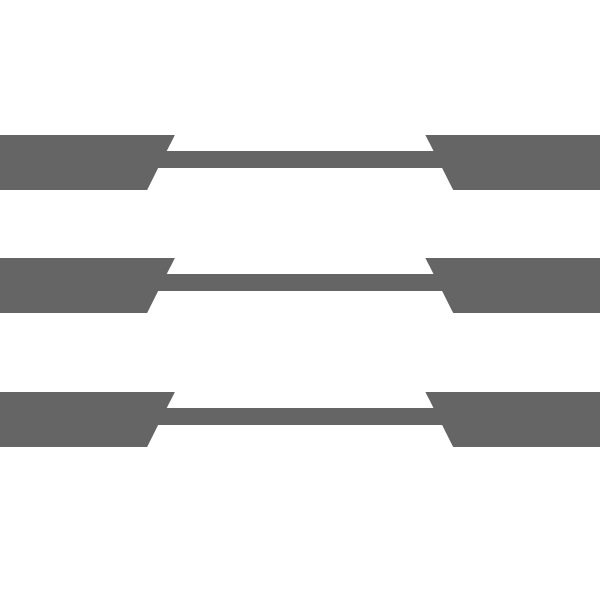


KORUZA test network is connecting several locations in the center of Maribor. Wireless optical units are deployed in wlan slovenija network to form an ultra-fast connection between nodes.

Built for testing the performance and reliability of wireless optical system KORUZA in order to enable further improvements, as well as for providing ultra-fast connectivity for direct collaboration for all involved.

The network is deployed as a wireless mesh network with WiFi links serving as backup at approximately 20Mbps capacity and KORUZA links at 1 Gbps capacity, carrying the user data the majority of time, except when experimental alignment algorithms are tested.
World Wide KORUZA experiment is the worlds first free-space optical coordinated experiment, deploying KORUZA at various locations around the globe for 6-12 months to evaluate the communication channel as well as the system performance, creating the first open data set on performance of a FSO system and the communication channel. We are inviting community networks and research institutions to participate in the experiment and sponsor deployments.


Experimental evaluation of FSO systems is traditionally associated with high costs and design complexity due to the high complexity of currently available systems and their significantly integrated nature. Often this prohibits researchers to modify systems and test their work, requiring them to construct their own systems. KORUZA as an open-source system mitigates these problems, the design transparency enables simple modification and adaptation for a range of purposes. A local performance baseline is created over the period of 6-12 months, enabling researchers to later modify the devices, improve them with their own transceivers, apply control and auto-tracking algorithms or modify otherwise and compare results to the baseline.
For community networks, KORUZA offers an alternative to often congested RF spectrum, ready to be tested. We are inviting networks to deploy the experimental links in their networks, pass real data through it however still keep the current RF links for the experimental duration as the fall-over option. The information gathered and findings from this experiment will feed back to the design and enable everyone to construct units on their own at a later time, deploying them in the network.

Leading motivation for launching the experiment is properly testing KORUZA system in real-world scenarios over a longer period of time, making it ready for an open-source release and creating an open data-set on FSO channel behaviour at a large number of locations. Additionally we want to establish a testbed and development basis for the FSO research.
KORUZA experiment consists of two devices, one at either side of the link between buildings or structures 50-150m apart with a clear line of sight. Every device is extended with test equipment and sensors to evaluate the performance, link properties as well as observing environmental parameters. Measurements are collected at the rate of 1Hz, except the optical received power at the rate of 10Hz, made available in real time through nodewatcher platform. Test units are a part of the Wlan Slovenija community network, using the VPN service to connect to the server and establishing a data collection link.
Every communication unit is equipped with the range of sensors to monitor the following parameters:
The test device is deployed next to ever unit to generate traffic and test for packet loss, aggregate all measurement and connect to the internet. It consists of:
Participants in the experiment receive the assembled, calibrated and tested KORUZA devices ready to install, containing the following:
Participants are required to:



The experiment is open for anyone to participate in, however we call for sponsorship and donations to be able to construct experimental devices and prepare them for deployment. Experimental equipment is provided by Institute IRNAS Rače and sponsored by partners, with the estimated equipment cost of approximately 1500EUR per setup. These funds go towards material end equipment costs (40%), development costs (~20%) and work costs (~40%).
To participate in the experiment please send us an email with organization details, proposed deployment location (GSP coordinates of link endpoint locations) and desired duration (6 or 12 months). Short description of currently running FSO experiment at location, if any, is welcomed as well.
The main idea behind the development of such facility was lack of more widely available test equipment and appropriate space, where low cost FSO systems in development could be tested.
Following our open-source approach, experimental designs and detailed hardware and software documentation will be available for reproduction by other research groups and hackspaces.

| Length | 50 m |
|---|---|
| Width | 2 m |
| Hight | 1 m |
| Ventilation | Fan with airfow rate 3000 m3/h, all air in the tunnel is changed in less than 2 min. |
| Measurement sensor | Real-time monitoring of visibility, temperature, humidity and pressure on multiple points in the tunnel. |
| Data collection | Websocket protocol, real time monitoring. |
All the experiments are performed in a 50m corridor, 2m high and 1m wide, constructed using clear PVC foil draped over rigid, wooden frame inside a dark hall. Tunnel can be entered trough double opening in foil located on both sides and in the middle. Up to three FSO links can bi set up parallel along the tunnel, each of them mounted on a railing, fixed in the concrete block, eliminating misalignment due to unstable mounting.
To simulate fog conditions fog is produced using the fog machine and uniformly distributed down the corridor using adequate ventilation. So far experiments indicate that using the fog machine results in realistic fog conditions, however dry ice and a signal flares are planned for use in the near future as well. Further systems, such as heating chambers, vibration measuring system and scintillation simulation experiment are currently under the development and should be installed in the facility soon.
The leading objective of the project is to provide comprehensive, well rounded set of experiments and tests, suficient to assess the performance of the FSO system in various, naturally occurring conditions. We aim to introduce alternative test methods and procedures, providing good-enough results for development purposes at afordable price and made them freely available to the research community.
Experiments focus on two aspects: assessment and analysis of the system and its components as such and performance evaluation under exposure to various stress factors.
Do you have more question or you would like more info? No problem, just contact us.